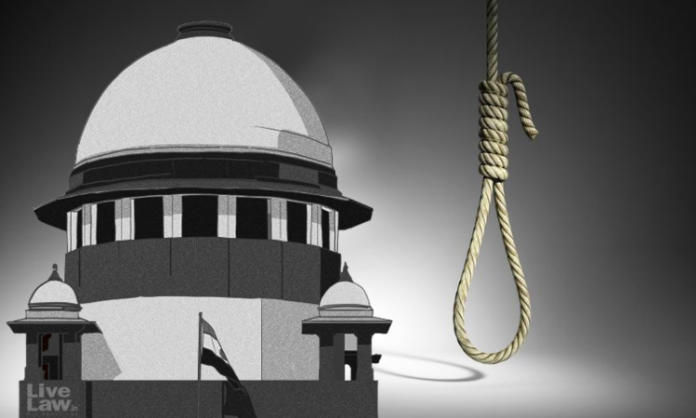Case Details :
-
Case Title: Chandrabhan Sudam Sanap vs. The State of Maharashtra
-
Citation : 2025 LiveLaw (SC) 119
-
Court: Supreme Court of India
-
Bench: Justices K.V. Viswanathan, B.R. Gavai, and Prashant Kumar Mishra
-
Date of Judgment: January 28, 2025
-
Criminal Appeal No.: 879 of 2019
Facts of the Case (in Brief) :
The case concerns the murder of a 23-year-old woman, EA (identity redacted), who was employed with TCS in Mumbai and residing at a hostel. The deceased boarded a train from Vijayawada to Mumbai on January 4, 2014. Upon her father’s calls going unanswered and her failure to reach her hostel, she was reported missing.
Subsequently, a partially burnt body was discovered on January 16, 2014, near the Eastern Express Highway in Mumbai, later identified as the deceased. Investigations revealed injuries indicating rape and a homicidal cause of death. The accused, Chandrabhan Sudam Sanap, was linked to the crime through circumstantial evidence such as CCTV footage, recovery of belongings, and extra-judicial confessions.
The prosecution relied heavily on circumstantial evidence to build the case. The accused denied involvement, claiming false implication.
Legal Issues Involved in the Case:
The case raised the following significant legal questions:
-
Admissibility of Electronic Evidence:
- The reliance on CCTV footage without a Section 65-B(4) certificate under the Indian Evidence Act was challenged.
- Whether the absence of such certification renders electronic evidence inadmissible.
-
Sufficiency of Circumstantial Evidence:
- Whether the chain of circumstantial evidence presented by the prosecution was complete and conclusive enough to convict the accused.
-
Reliability of Extra-Judicial Confession:
- Whether the confession to a witness (PW-9) could form the basis for a conviction.
-
Conduct of Investigation:
- Allegations of procedural lapses in the investigation, including parallel investigations and mishandling of evidence.
-
Application of Death Penalty:
- Whether the circumstances of the case warranted the imposition of a death sentence, considering legal principles and evidence.
Landmark Judgment :
-
Kesavananda Bharati v. State of Kerala (1973):
This case established the ‘basic structure’ doctrine, asserting that while Parliament has wide-ranging powers to amend the Constitution, it cannot alter its fundamental framework.
-
Maneka Gandhi v. Union of India (1978):
The Supreme Court expanded the interpretation of Article 21, ruling that the ‘right to life and personal liberty’ encompasses a wide array of rights, including the right to a fair trial and the right to travel abroad.
-
S.R. Bommai v. Union of India (1994):
This judgment clarified the scope of Article 356, emphasizing that the President’s rule in a state is subject to judicial review and cannot be imposed arbitrarily.
-
Indira Sawhney v. Union of India (1992):
Commonly known as the Mandal Commission case, the Court upheld the implementation of reservations for Other Backward Classes (OBCs) in government jobs, while also introducing the concept of the ‘creamy layer’ to exclude the more affluent members of these communities from reservation benefits.
-
Vineet Narain v. Union of India (1997):
This case led to significant reforms in the Central Bureau of Investigation (CBI) and the Central Vigilance Commission (CVC), aiming to insulate these agencies from political influence and enhance their autonomy.
-
Justice K.S. Puttaswamy (Retd.) v. Union of India (2017):
The Supreme Court recognized the right to privacy as a fundamental right under the Constitution, impacting various aspects of law and governance, including data protection and surveillance.
-
I.R. Coelho v. State of Tamil Nadu (2007):
The Supreme Court ruled that laws placed in the Ninth Schedule of the Constitution are not immune from judicial review if they violate the basic structure of the Constitution.
-
Navtej Singh Johar v. Union of India (2018):
In a historic verdict, the Court decriminalized consensual homosexual acts between adults, reading down Section 377 of the Indian Penal Code and affirming the rights to equality and dignity.
-
Shayara Bano v. Union of India (2017):
The Court declared the practice of instant triple talaq (talaq-e-biddat) unconstitutional, marking a significant step towards gender justice in personal laws.
-
Supreme Court Advocates-on-Record Association v. Union of India (2015):
This judgment reaffirmed the collegium system for the appointment of judges to the higher judiciary, striking down the National Judicial Appointments Commission (NJAC) as unconstitutional.
Judgment/Order Given by the Court :
- Outcome: The Supreme Court acquitted the accused and overturned the conviction and death sentence upheld by the High Court of Bombay.
Key Observations:
- Circumstantial Evidence: The Court emphasized the five golden principles for convicting based on circumstantial evidence (Sharad Birdhichand Sarda vs. State of Maharashtra). It found that the evidence presented did not form a complete chain excluding all hypotheses except the guilt of the accused.
- Electronic Evidence: The prosecution failed to produce the mandatory Section 65-B(4) certificate for the CCTV footage. This rendered the evidence inadmissible, weakening the case significantly.
- Extra-Judicial Confession: The Court deemed the extra-judicial confession unreliable as it was surrounded by suspicious circumstances and lacked corroborative evidence.
- Investigation Lapses: Parallel investigations and procedural delays raised doubts about the integrity of the evidence. The Court noted that prejudice was caused to the accused due to such lapses.
- Death Penalty: Given the insufficiency of evidence and the lack of a conclusive chain of circumstances, the imposition of the death penalty was deemed unsustainable.
-
Ratio Decidendi:
- The inadmissibility of critical electronic evidence (CCTV footage) and gaps in the chain of circumstantial evidence led to the acquittal.
- The Court underscored the principle that the prosecution must establish guilt beyond a reasonable doubt, especially in cases involving capital punishment.
Also Read:
Rights of undertrial prisoners in India
How To Send A Legal Notice In India


